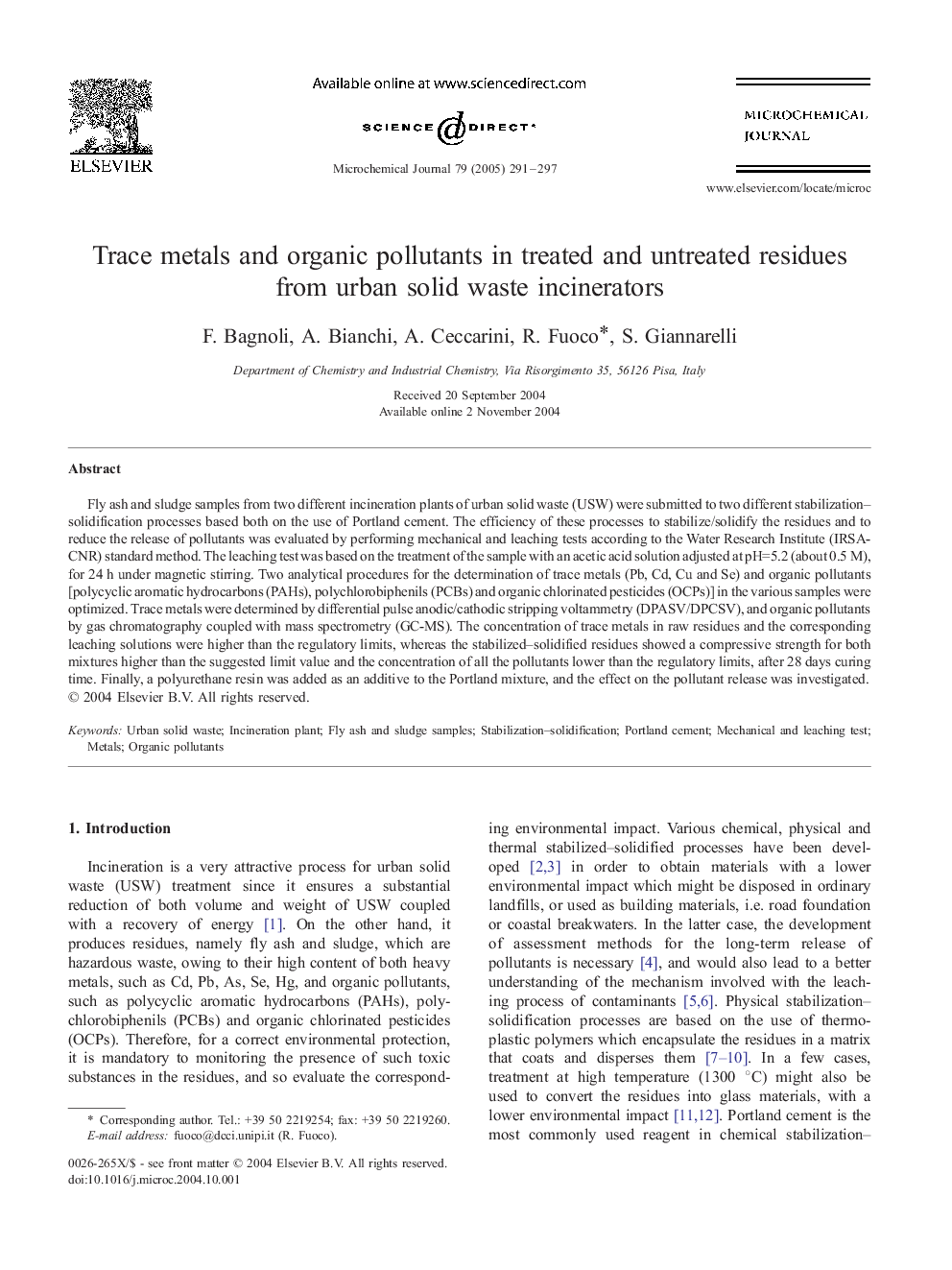| Article ID | Journal | Published Year | Pages | File Type |
|---|---|---|---|---|
| 9755048 | Microchemical Journal | 2005 | 7 Pages |
Abstract
Fly ash and sludge samples from two different incineration plants of urban solid waste (USW) were submitted to two different stabilization-solidification processes based both on the use of Portland cement. The efficiency of these processes to stabilize/solidify the residues and to reduce the release of pollutants was evaluated by performing mechanical and leaching tests according to the Water Research Institute (IRSA-CNR) standard method. The leaching test was based on the treatment of the sample with an acetic acid solution adjusted at pH=5.2 (about 0.5 M), for 24 h under magnetic stirring. Two analytical procedures for the determination of trace metals (Pb, Cd, Cu and Se) and organic pollutants [polycyclic aromatic hydrocarbons (PAHs), polychlorobiphenils (PCBs) and organic chlorinated pesticides (OCPs)] in the various samples were optimized. Trace metals were determined by differential pulse anodic/cathodic stripping voltammetry (DPASV/DPCSV), and organic pollutants by gas chromatography coupled with mass spectrometry (GC-MS). The concentration of trace metals in raw residues and the corresponding leaching solutions were higher than the regulatory limits, whereas the stabilized-solidified residues showed a compressive strength for both mixtures higher than the suggested limit value and the concentration of all the pollutants lower than the regulatory limits, after 28 days curing time. Finally, a polyurethane resin was added as an additive to the Portland mixture, and the effect on the pollutant release was investigated.
Related Topics
Physical Sciences and Engineering
Chemistry
Analytical Chemistry
Authors
F. Bagnoli, A. Bianchi, A. Ceccarini, R. Fuoco, S. Giannarelli,
